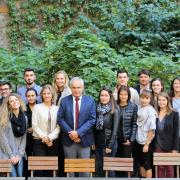
After an introduction to the OIV and its activities by the different unit heads, they were welcomed by Director General Jean-Marie Aurand, who emphasised the distinctive character of this training programme and the opportunities it offers, thanks to the network of associated universities and companies.
The specific nature of the course is designed to be mono-sectoral, multi-disciplinary, itinerant, international and experiential all at the same time; it also now has one of the most developed networks in the world of wine. Since 1987, almost 500 players and policy makers in the wine world have taken this training programme.
Before this year's class left the OIV headquarters, Jean-Marie Aurand stressed the course's international dimension, which is expressed through a curriculum that every year leads students to discover over 20 key countries on the wine planet, spread over the 5 continents.
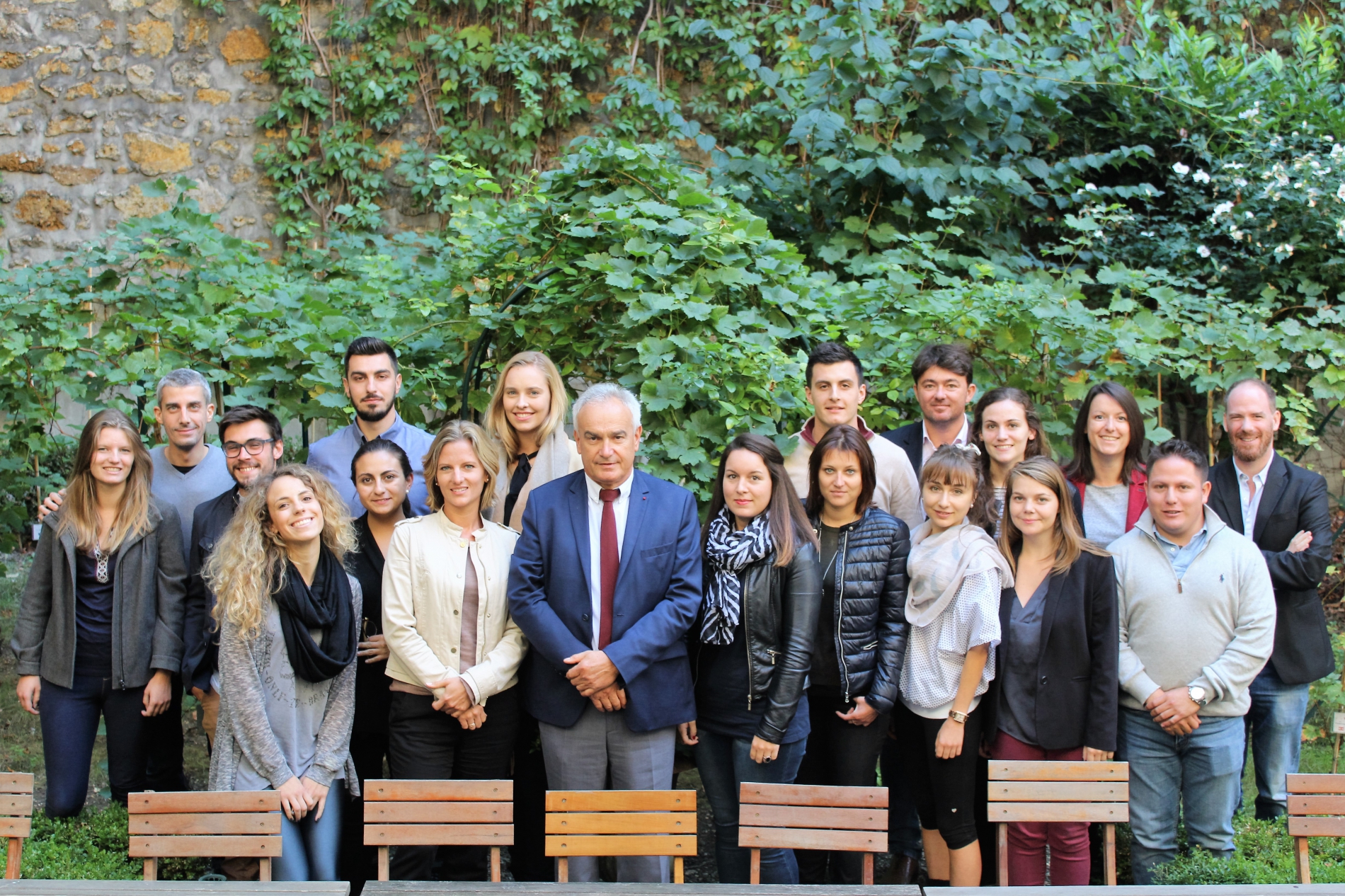
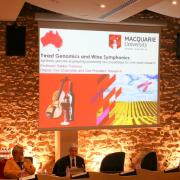
As the world’s intergovernmental organisation of scientific and technical nature of recognised competence for its works concerning vines, wine, wine-based beverages, table grapes, raisins and other vine-based products, the International Organisation of Vine and Wine (OIV) has taken a keen interest to fully understand the potential challenges and opportunities associated with the emerging science of Synthetic Biology.
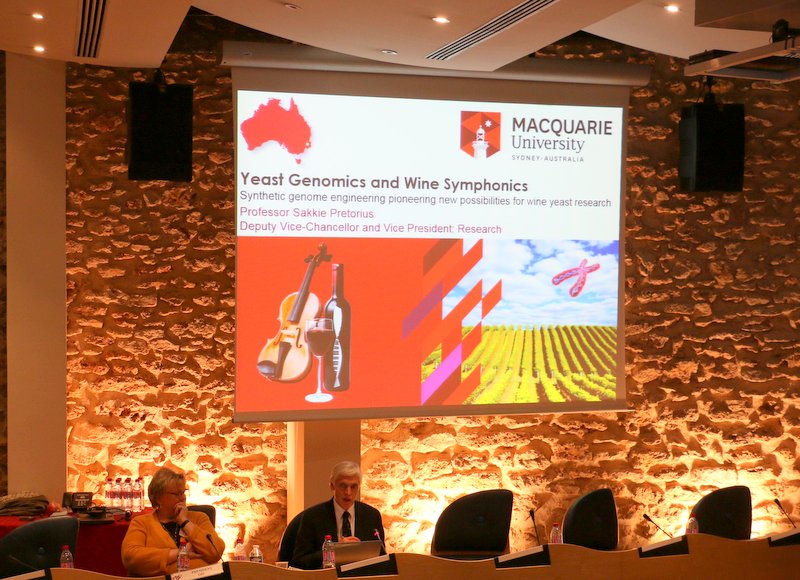
In this context, the OIV has invited Professor Sakkie Pretorius (Macquarie University, Sydney, Australia) to present a special lecture on “Synthetic genome engineering forging new frontiers for wine yeast” to a joint session of our various Commissions on the 4th of April 2016. This lecture was well-received and sparked the interest of all the attendees to proactively engage all stakeholders of the global wine industry ‒ researchers, industry practitioners, policymakers, regulators, commentators and consumers ‒ in a meaningful dialog about the potential challenges, opportunities and impacts emanating from Synthetic Biology.
To support this important conversation, Professor Pretorius undertook to write a comprehensive review article on this subject.
This paper has now been published in a peer-review journal, Critical reviews in Biotechnology (see attached). This article is an Open Access publication and can be downloaded for free as a PDF from the website:
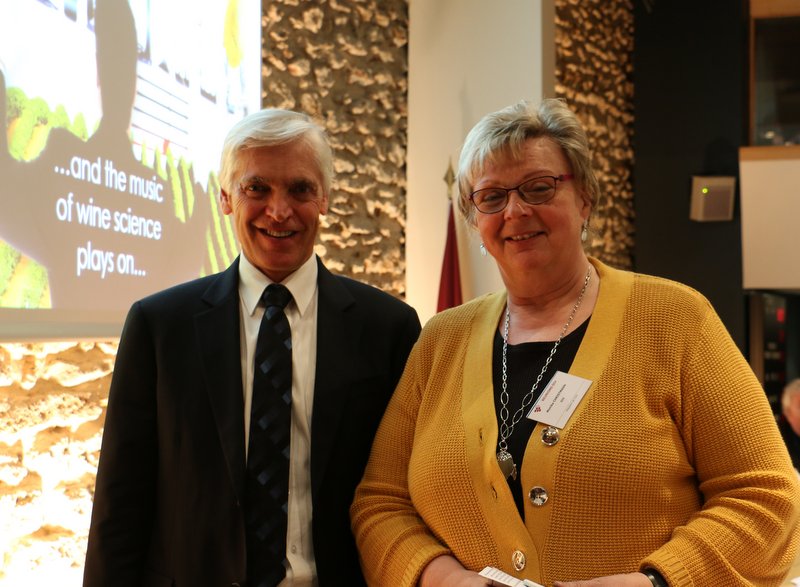
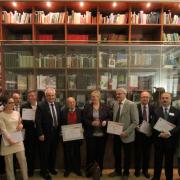
A total of 12 Awards and 13 Special Mentions were awarded by the OIV to this year's winners.
As an exceptional gesture, the Grand Prix Award was awarded to both Pierre Galet and Jancis Robinson for their contribution to the dissemination of knowledge about the vitivinicultural sector and in recognition of their internationally-renowned work.
Ms Christmann and Mr Aurand highlighted the growing success – to the delight of interested readers – in terms of quality information on the wine world, in a number of fields: technology and science, economy and law, history and fine arts, literature, health, the marriage between wine and gastronomy, the discovery and presentation of wines, as well as wine regions around the world.
The 2016 ceremony confirmed the renown and prestige of the OIV Awards, as well as the fantastic openness given the inclusion of works concerning countries that are not OIV members or about whose wine production still very little is known.
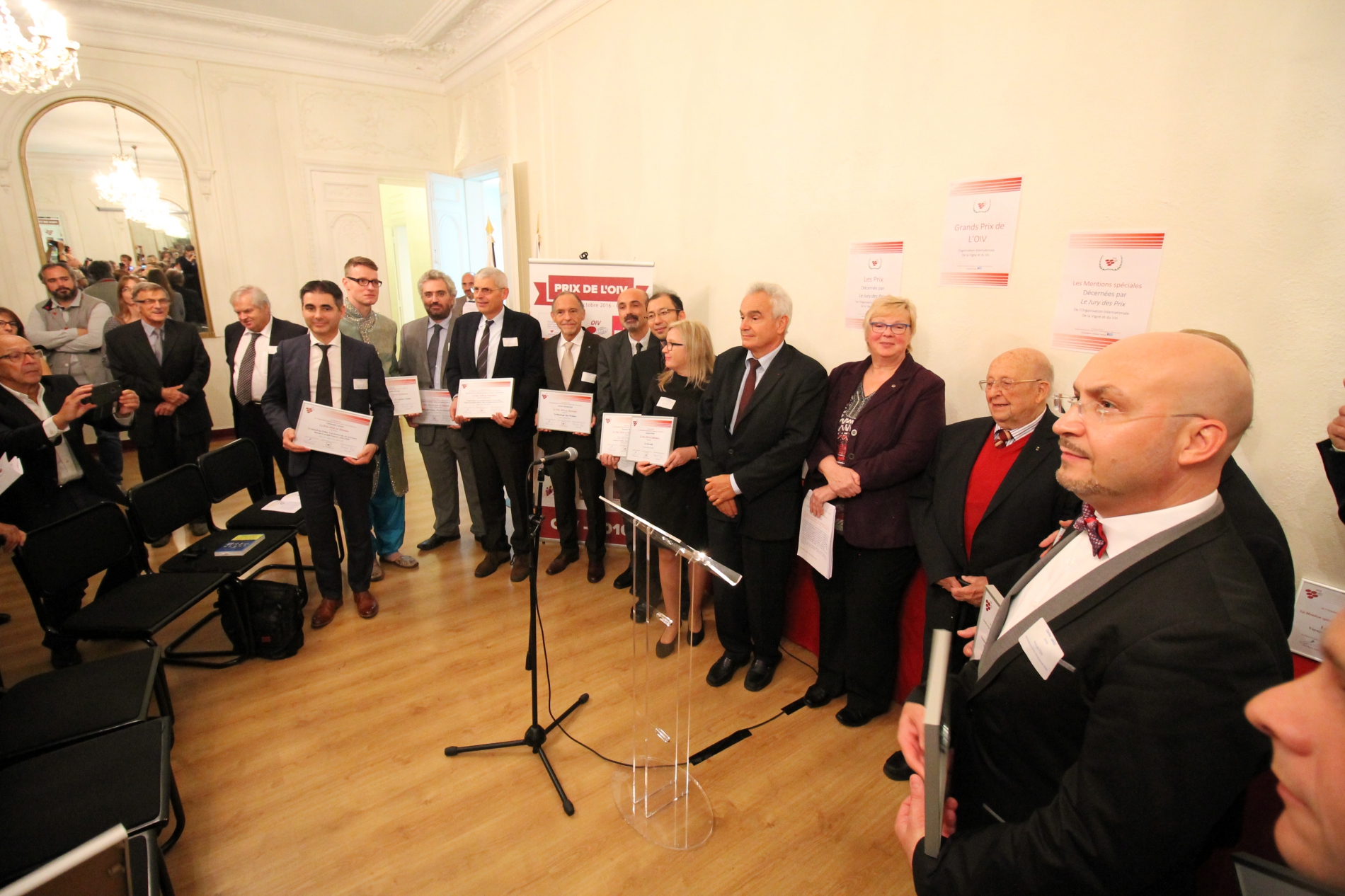
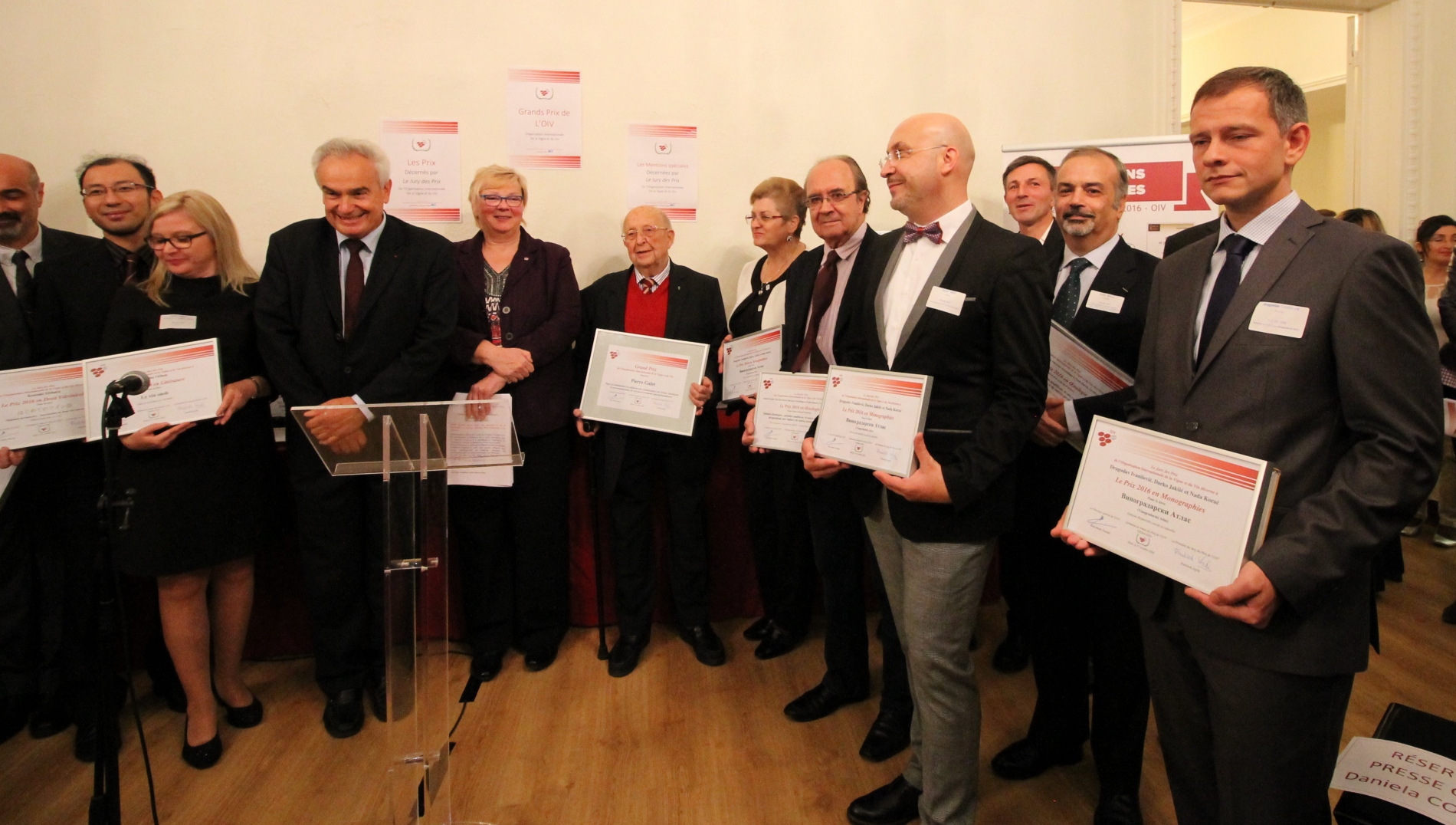
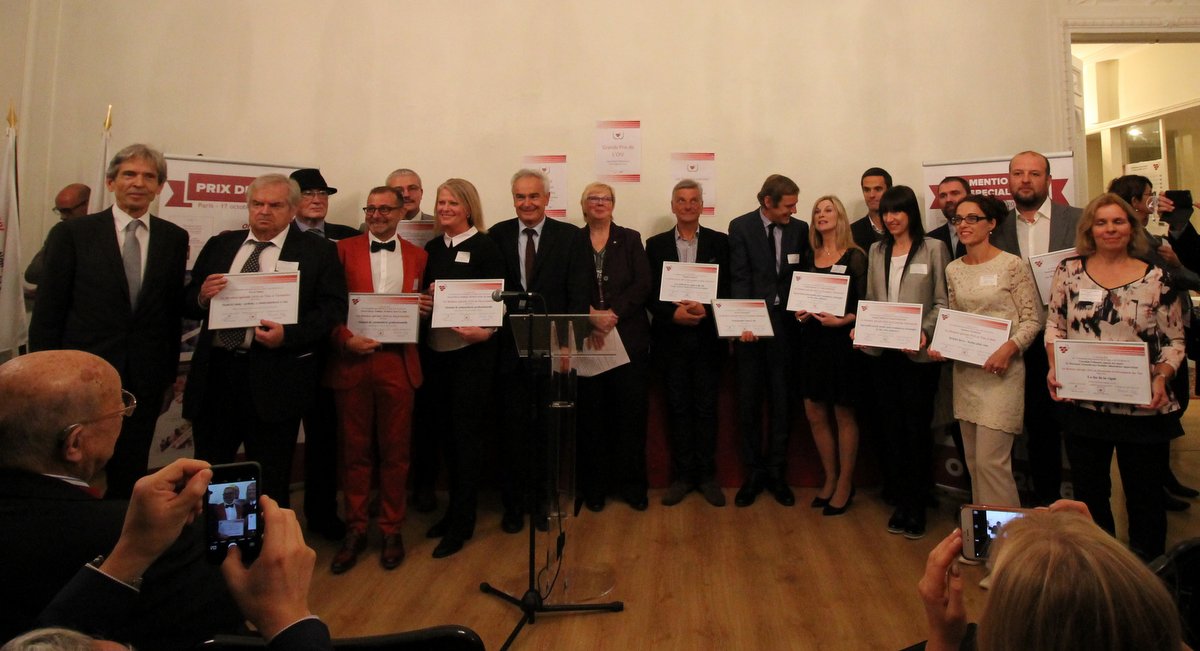
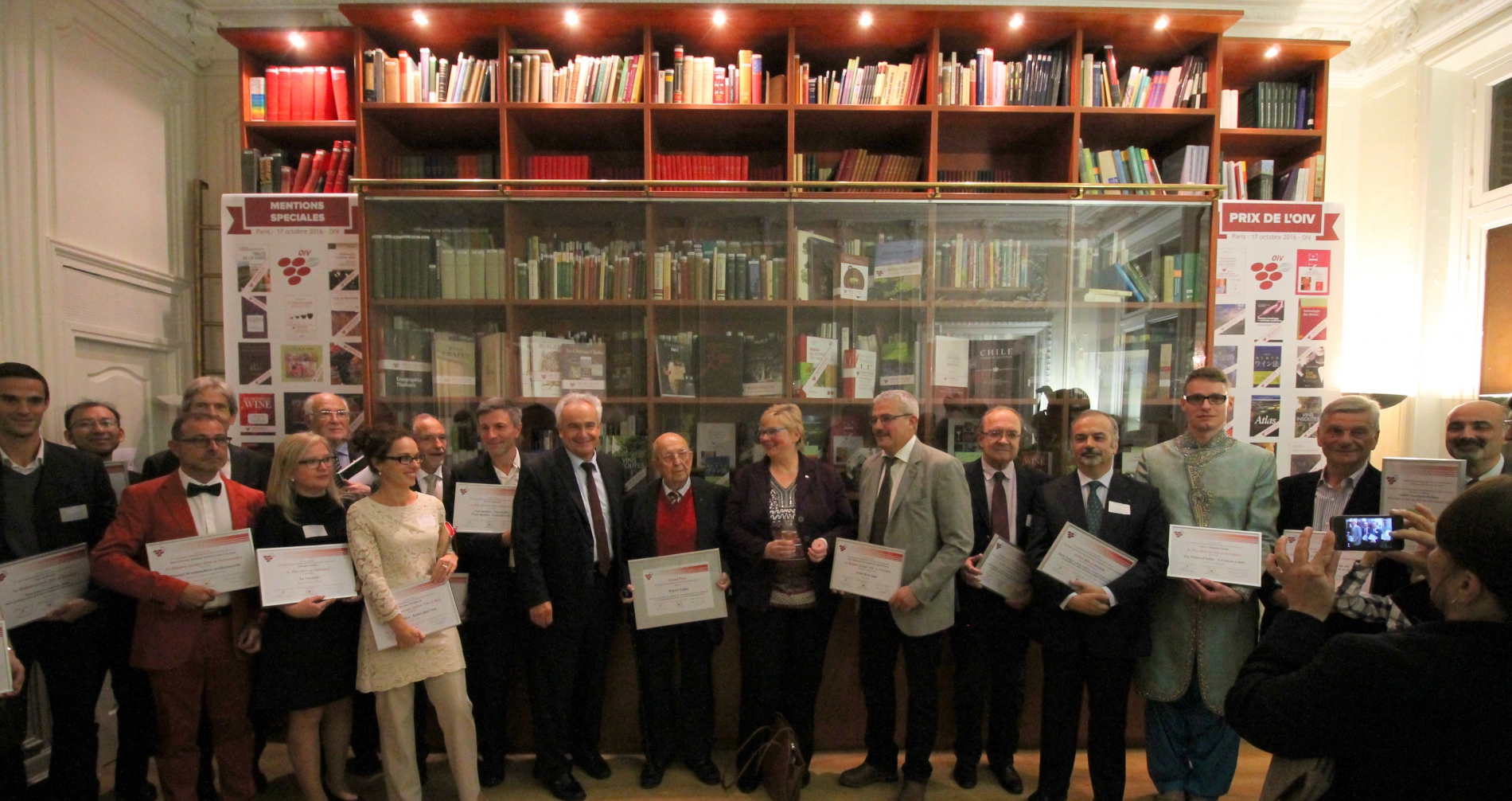
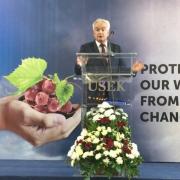
During this conference – which was attended by representatives of the ministries of agriculture and industry together with those of economy, commerce and foreign affairs, saw major participation from the professionals of the Lebanon Winemaking Union (UVL) and was chaired by Mr Zafer Chaoui – the Director General of the OIV recalled the major issues for the world sector and outlined the responses given by the OIV, accompanied by the priorities of the 2015-2019 Strategic Plan, especially in terms of sustainable development.
The speeches given by the Minister for Agriculture on regulation; by professionals from the UVL on climate change and plot delimitation; by academics on the pedo-climatic characterisation of Lebanese terroirs, cooperation where research is concerned or the functional effects of consuming red wine; or by Yann Juban from the OIV on health and nutritional issues in relation to labelling allowed for numerous exchanges to take place.
At the time of this visit, contacts were also made between the President of the French Institute of Vine and Wine, Mr Bernard Nadal, and his opposite number in Lebanon, Mr Carlos el Adem, so as to develop projects that were dear to the hearts of two major players in the renaissance of Lebanese viticulture who died recently, Serge Hochar and Michel de Bustros. Official tributes were paid to their memories.
During technical visits to the various châteaux of the Beqaa (Kefraya, Ksara and Saint Thomas), Jean-Marie Aurand underlined the developments in the Lebanese winemaking sector, which has carried out preliminary studies to better understand its indigenous vines, such as Obeidy, and to differentiate its terroirs – a necessary foundation for an approach to geographically identify Lebanese wine. Jean-Marie Aurand praised the success of this third international meeting held at the initiative of Director General for Agriculture Louis Lahoud, whose efforts were also acknowledged in the OIV “Economy and Markets” Expert Group of which he is vice-president. The Director General of the OIV was also able to appreciate the multi-millenary winemaking heritage of Lebanon when he visited the temple of Bacchus in Baalbek.
